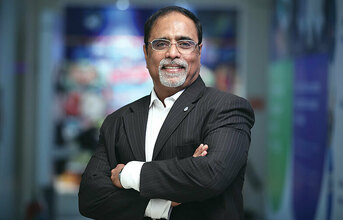
How has been the last year for YFAI India? How do you look at this financial year?
Indian market has been challenging in the last year and continuing the same trend this year as well. At YFAI, we use this challenge as an opportunity to focus on internal efficiencies and benchmarking and sharing best practices across our global footprints. We have an internal system that provides a platform to share best practices and focusing on this helps to improve synergies and enables to face tough situations. We continue to improve our competitiveness through these efforts.
We have also been utilising this opportunity to build our local capability and position YFAI to strategic success. We have developed a growth strategy for India aligned with our global customer and product strategies. Part of this requires widening our customer base and executional excellence through bringing in new technology, development of people and supply chain. We have installed a paint shop and invested in some specific technologies that were required for a new customer and doubled our footprint in Chennai
This year, we are additionally focusing on hosting Technology shows at customer locations wherein we display our key innovations that are considered to be market trends. Some of the area of focus this year has been Smart Surface, Ambient Lighting, Light Weighting and Decorative technologies. We have completed two such shows and are planning to conduct similar shows across current and prospective customer base. The innovations that were displayed have been much appreciated by customers.
There is an increasing trend towards the use of going green in the automotive industry. How do you look at it? How is YFAI working towards it?
Reducing weight is one of the avenues to help go green. At YFAI, we work towards bringing down the weight of the interiors where some of the light weighting technologies have helped to address this requirement.
The use of natural fibre-reinforced composite materials is currently gaining new impetus in the form of decoratively finished designs which retain a natural appearance. YFAI is developing such products.
Our innovative compressed fiber molding process makes it possible to reduce door panel substrate weight up to 40%. This as a lightweight solution can be beneficial to improve fuel economy to meet defined standards.
It also combines the advantages of natural fiber and thermoplastic so that either technology can be deployed where needed to maximize door trim panel performance.
Our streamlined, single-step process reduces production time and costs for delivering a high-quality mass-saving solution.
Other weight saving materials and processes have been developed for our products to reduce the combined weight of the interiors with a different approach to suit customer functional requirements. These all offer the benefit for improved fuel economy.
How do you look at connected cars and autonomous driving?
The automotive industry is facing drastic changes in the form of Connected Car, Autonomous Driving, Shared Mobility and Electrification. YFAI's ambition is to drive, rather than react to, the significant shift in the automotive industry that is being shaped by these global megatrends, new market players and technologies.
One of YFAI's advantages is our focus on the futuristic interiors, starting with our understanding of end-consumer needs and wants, our insight in new technology and our ability to transform all this know-how into solutions for car interiors that create a better life on board.
One such innovation is Smart Interior Surface (SIS) that may gradually find its adaptation in Indian market. Innovations, combining adaptations of developing technology but suited to the demanding vehicle requirements, are very exciting. YFAI has several SIS products which are redefining the vehicle interiors.
Interiors is changing and the areas where consumers will concentrate for media and control functions are changing. In the future, every surface inside the vehicle can become a smart surface. Various operating functions in the vehicle will be seamlessly and invisibly integrated into the design of the interior, and information will always be able to access flexibly. This will be made possible by the seamless integration of HMI (human-machine interface) technologies, such as displays or capacitive switches. In the vehicle's interior, Smart surface particularly offers a wide latitude of design freedom.
We are particularly proud on our Multifunction Deco Panel (MFDP) products recently launched with one of our global customers. The interest in MFDP through our current series of India technology shows is overwhelming.
Understanding the trends, customer needs and changing interior requirements is the key and we are looking forward to introducing these products in the next generation local vehicles.
How do you look at the emergence of e-vehicles? How do you look at e-vehicles' future in India?
There is a great deal of information available on the prognosis for the e-vehicles on the India market which is following global trends to use hybrid and electric vehicles.
Also, there is the drive from the government to promote and develop the infrastructure along with innovation incentives to enable e-vehicles to be more suitable for the consumer.
Local development of electric 2 and 3 wheelers are being well publicized and the introduction of electric vehicles with higher distance range makes their acceptance more attractive. Public transport initiatives to use electric busses is already developing.
Consumers are becoming aware of the environmental benefits and the infrastructure considered to be provided by energy concerns and the automobile industry combined will gradually enable more consistent city performance and long-range use of electric vehicle.
This trend for all vehicle segments will continue to develop. The rate of this development is still being analysed. At global level, YFAI believes this is an opportunity and is working with new age vehicle manufacturers, who are focused on EV. This will provide a strategic advantage to YFAI in India as and when the migration to this technology happens.
END
